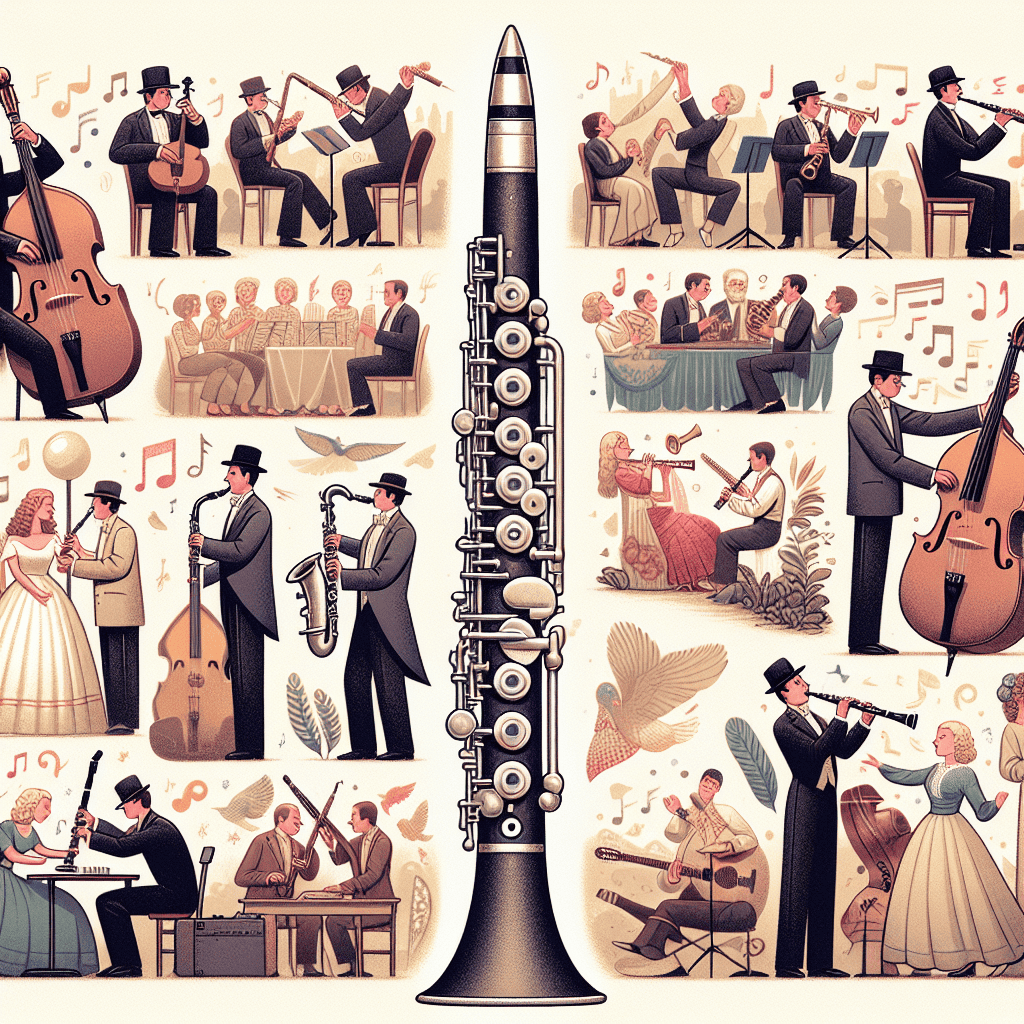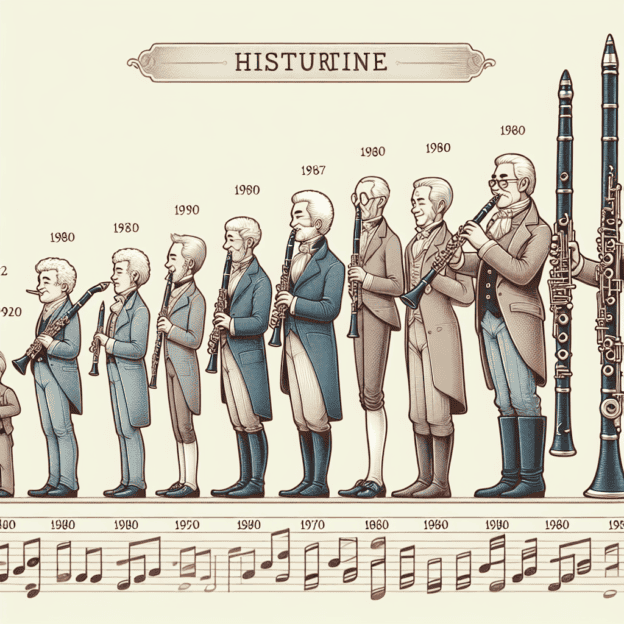Introduction to the Clarinet's Journey
When we talk about music, one of the most fascinating instruments that comes to mind is the clarinet. Over the years, this woodwind instrument has gone through many changes that have improved its sound and playability. Let's explore the clarinet development timeline and discover its rich history, unique developments, and the important people who helped shape its evolution.
The clarinet's evolution wasn't a sudden change but a series of innovations and modifications aimed at improving sound quality, playability, and versatility. It all started with the chalumeau, the clarinet's predecessor. Originating from France in the late 17th century, the chalumeau was basically a wooden tube with a single-reed mouthpiece. Its sound was limited and couldn't cover a wide range of notes.
Early Developments: From Chalumeau to Clarinet
The big breakthrough came with Johann Christoph Denner, a German instrument maker, in the early 18th century. He modified the chalumeau by adding a register key, which expanded the instrument's range to over two octaves. This change led to the creation of the clarinet as we know it today.
| Time Period | Development | Impact |
|---|---|---|
| Late 17th century | Chalumeau | Limited range and sound |
| Early 18th century | Addition of register key | Extended range to over two octaves |
| Late 18th century | Five-key clarinet | Easier to play more notes |
As time went on, more improvements were made. The late 18th century saw the introduction of the five-key clarinet. These extra keys allowed players to hit more notes more easily. The clarinet began to gain popularity in orchestras and concert settings because of its wider range and expressive abilities.
The Golden Age of Clarinet Development
The 19th century was a golden period for the clarinet, marked by major advancements and the introduction of several types of clarinets. Ivan Müller, a well-known clarinetist and inventor, introduced the 13-keyed clarinet in 1812, which allowed for even more precise playing. This period also saw the birth of the bass clarinet, bringing deeper, richer tones to the clarinet family.
Moving into the 20th century, the Boehm system of keywork became popular. It was created by Theobald Boehm, a German inventor known for his work on the flute. The Boehm system brought a new level of technical refinement and standardization to the clarinet. Players appreciated the increased accuracy and ease of play it provided.
Modern Developments and Innovations
Notable makers like Martin Freres also played a key role in this timeline. Their instruments have been known for excellent craftsmanship and quality. The commitment of such brands ensured that the clarinet continued to improve in terms of design, durability, and performance.
Another important addition to the clarinet family was the Contrabass Clarinet. Larger and deeper in tone than the bass clarinet, the contrabass clarinet added a completely new dimension to the clarinet's sound, making it a common instrument in modern symphonic and band arrangements.
Advances in technology in the late 20th and early 21st centuries brought new materials and manufacturing techniques. The use of composite materials, improved machining precision, and innovative design changes further improved the instrument's reliability and sound quality.
Influential Players and Genre Expansion
An important part of the clarinet's development timeline is the influence of famous clarinetists who expanded what could be done with the instrument. Players like Benny Goodman in the jazz scene and classical virtuosos brought new playing styles and techniques, attracting audiences to the beautiful world of clarinet music.
The clarinet also found a solid place in various music genres beyond classical and jazz, including folk, pop, and avant-garde music. Its versatility has made it an essential instrument in the woodwind family.
Future Trends in Clarinet Development
One of the latest trends in clarinet development is the integration of digital technology. Digital clarinets and accessories are emerging, allowing for more experimental sounds and electronic music integration. This evolution shows that the clarinet, while deeply rooted in tradition, continues to adapt to modern musical landscapes.
Conclusion
As we finish our exploration of the clarinet development timeline, it's clear that this instrument has a rich past and an exciting future. The dedication of instrument makers like Martin Freres, the innovations by influential figures, and the significant impact of passionate players all contribute to this ongoing story. Whether you're a student picking up the clarinet for the first time or an experienced professional, understanding this history enhances your appreciation and connection to this remarkable instrument.







